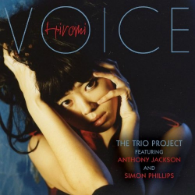In the liner notes to Tree of Life, drummer/composer/arranger Francisco Mela’s third album as a leader, Bill Milkowski quotes him: “There are three bands that I really love, the electric Miles Davis band with keyboardists Keith Jarrett and Chick Corea, Weather Report, and Chucho Valdés with Irakere. What I’m trying to do with Cuban Safari is put those three bands together.” That’s a mighty ambitious agenda.
Cuban Safari is an octet with notable soloists. Guitarist Ben Monder shines as an ensemble player throughout, but his wire-walking solo on “Classico Mela” is one of the album’s high points. Saxophonist Uri Gurvicharticulates Mela’s complex melodic and harmonic lines; he’s an imaginative soloist but his sense of time is unshakable. (Note his playing on both the aforementioned tune and the opener, “Retrograde,” to get your head melted.) Pianists Leo Genovese and Elio Villafrancahave different but unique strengths. Musically, the music on Tree of Life ranges — sometimes in the same tune — from radical post-bop to fiery Afro-Cuban, modern electric, and post-millennial transworld jazz. Check the twists and turns in “Africa en Mis Venas,” with its timed stops and starts.
Two different intricate heads are played by Monder and Gurvich in lockstep succession before Monder moves it into post-bop terrain on his solo, shifting and shaping the changes as he goes. Villafranca brings it back harmonically with a quick montuno phrase before pursuing an unaccompanied and elegantly swinging solo in which he creates a separate musical dialogue in counterpoint. “Toma del Poder” begins almost Monk-like in its recurring five-note chord and melody sequences, but quickly gets stretched and scraped into the new century with knotty rhythmic changes from all the front-line players, while bass and drums provide an angular but recognizable groove.
“Yo Me” is dark, funky, spooky electric jazz with atmospheric electric piano and fine soprano sax work by guest Jowee Omicil. “Fiesta Conga” features percussionists Mauricio Herrera and Arturo Stable in a duel. Closer “Gracias a la Vida” begins as a ballad, gets turned inside out byMela’s kit and Villafranca’s piano to a Latin tinge, and moves outside in Gurvich’s solo before the ballad returns. Tree of Life is a wildly imaginative, expertly played recording; Mela and Cuban Safari illustrate that the future of jazz is indeed now.





